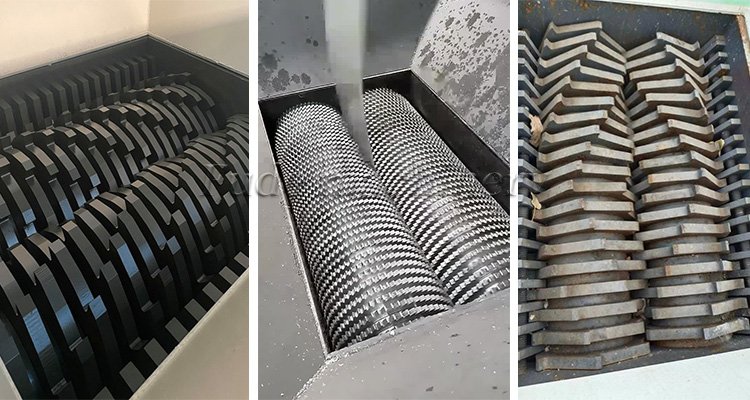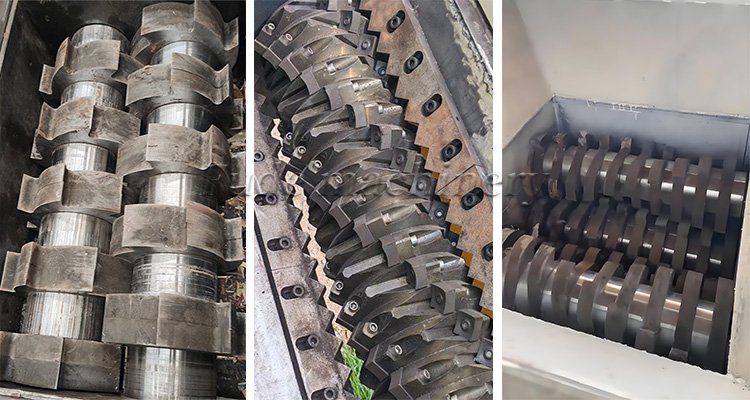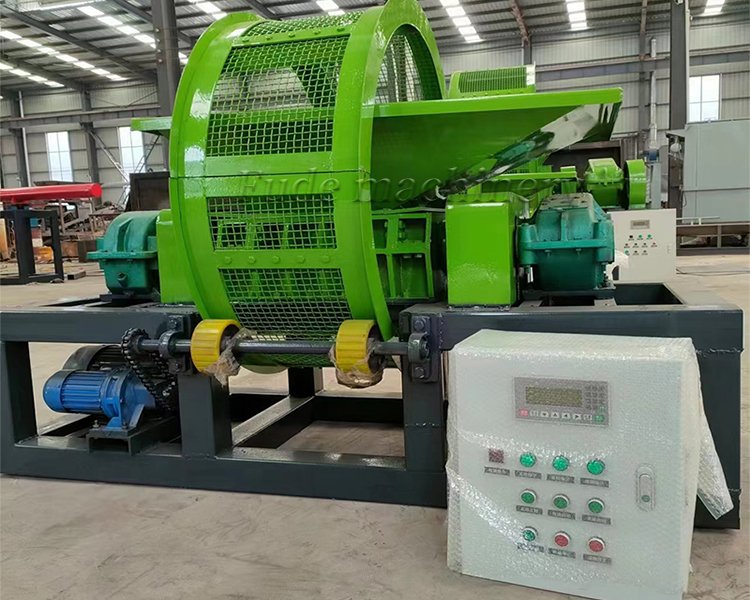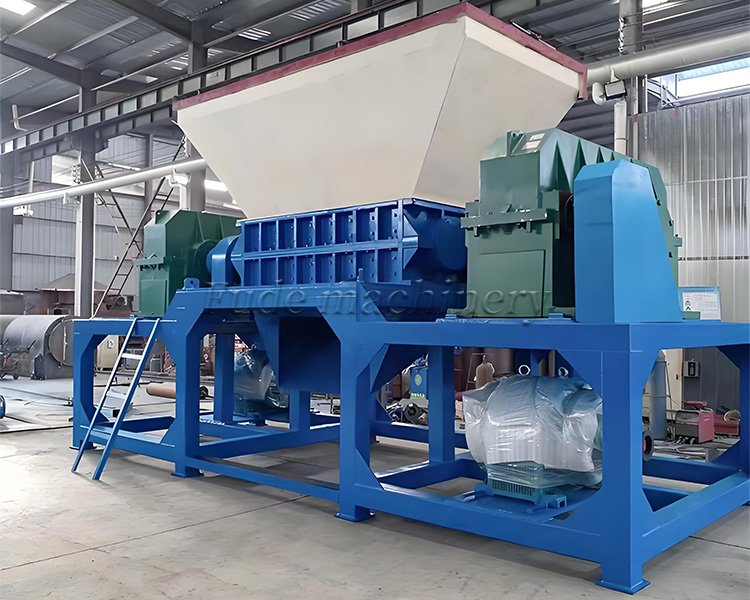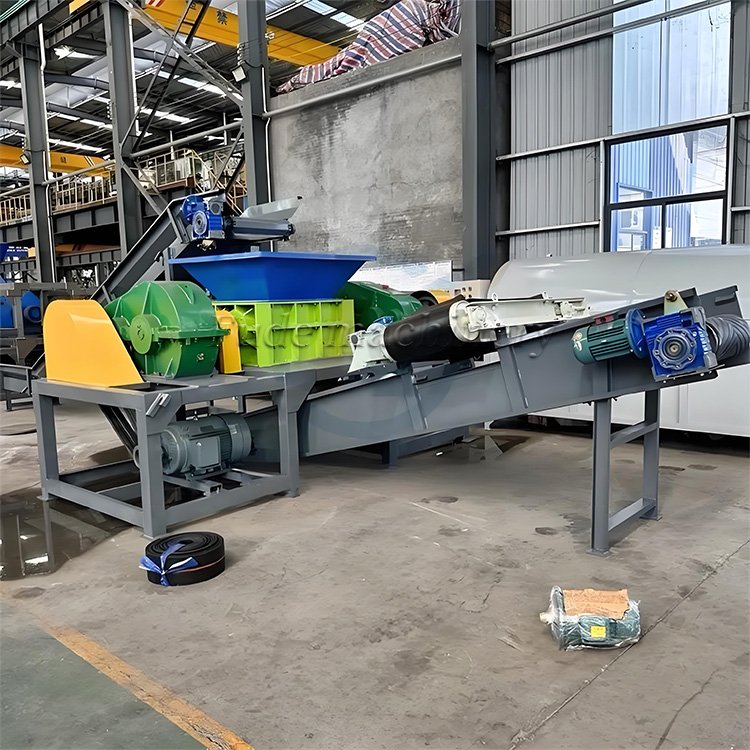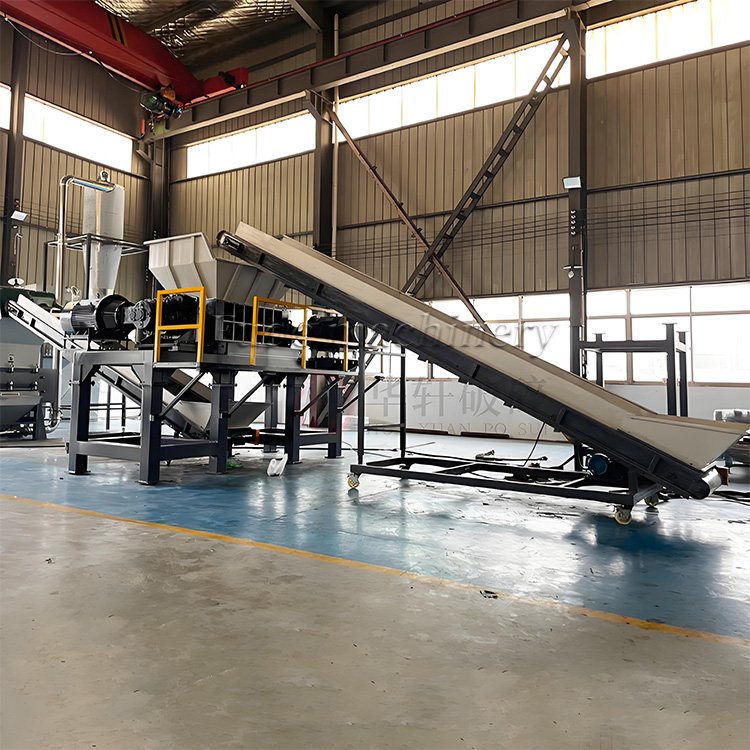At Fude Machinery, we understand that investing in a scrap metal shredder is a major decision. You have a simple goal: you want the best possible performance for a fair price. But what really drives a metal shredder’s price? And how do those factors connect to its real-world performance?
As a factory-direct manufacturer, we want to be very clear about this. The price is not just a random number. It is directly tied to the machine’s power, durability, and intelligence. We build these machines every day, and we want to show you the core factors that you are paying for, so you can make a smart, informed choice.
How Do Blade Material and Design Affect Price and Performance?
The shredder’s blades are the single most important component influencing both price and performance. Think of them as the teeth of the machine. Their quality determines how well the shredder “chews” through metal, how long it can work without maintenance, and how often you need to spend money on replacements.
Cheaper blades might lower the initial price, but they wear out quickly. This leads to poor performance, frequent downtime, and higher costs over time. We believe in getting this part right from the start.
The price of blades depends on two things: the metal alloy they are made from and the complexity of their design. A standard tool steel blade is the most basic option. It works for softer metals but wears down fast against hard scrap. For serious metal shredding, we use special hardened alloy steels.
These can include materials like D2, H13, or even more complex proprietary alloys with chromium and molybdenum. These materials are much more expensive to produce. But they offer dramatically better resistance to wear and impact. This means they stay sharp longer, cut more efficiently, and can handle tough materials like steel beams or engine blocks without chipping. This is a core part of our custom shredding solutions. We match the blade to your specific scrap.
Practical tips and suggestions:
- Be specific about your scrap: Tell your manufacturer exactly what you are shredding. “Mixed metal” is not enough detail.
- Do not choose the cheapest blade: A small extra investment in better blades can save you thousands in maintenance and downtime.
- Ask about blade design: The shape, thickness, and number of hooks on a blade all affect how it grabs and cuts material.
Actual case: A client was shredding stamped steel parts with a machine that had basic blades. They were replacing them every three months. We supplied them with a set of our custom-hardened alloy blades. They have now been running for over a year without a replacement, and the shredder’s performance has been more consistent.
What Is the Role of the Motor and Gearbox in Shredder Cost?
If blades are the teeth, the motor and gearbox are the muscle. This system delivers the raw power needed to tear through solid metal. The size and type of this power unit are major factors in the shredder’s price. A more powerful motor costs more.
A more robust gearbox costs more. But trying to save money here is a big mistake. An underpowered shredder will constantly stall, jam, and fail to process your material efficiently. This directly hurts your production and profitability.
You generally have two main choices for motors: electric or hydraulic. Electric motors are often more energy-efficient and quieter. Hydraulic systems deliver massive torque, which is pure twisting force. For shredding very dense or tough items like scrap cars or thick steel, a high-torque hydraulic system is often superior.
It can power through tough spots where an electric motor might overload. High-quality gearboxes are also critical. They take the speed from the motor and convert it into the immense torque the blades need. We use oversized, hardened gearboxes to ensure they can handle the shock loads of metal shredding without failing. This commitment to robust power systems is key to delivering a reliable heavy-duty metal shredder.
Practical tips and suggestions:
- Match power to your toughest material: Base your power choice on the most difficult thing you will ever shred, not the average.
- Consider your energy costs: An efficient electric motor can save you money on electricity bills over the long term if it is suitable for your scrap.
- Ask about the gearbox brand: Reputable gearbox manufacturers provide better reliability and long-term support.
Actual case: A recycling yard wanted to start processing bundled steel cables. Their existing electric shredder kept jamming. We installed a new Fude shredder with a hydraulic power pack. The high torque of the hydraulic system allows it to shred the dense cables slowly and steadily without any issues.
Why Does Machine Weight and Construction Matter So Much?
A heavier shredder is almost always a better shredder. Why? Because weight equals steel. A heavier machine means it is built with thicker, stronger steel plates for the frame, the cutting chamber, and the support structures. This is a significant part of the metal shredder price.
Steel is expensive, and using more of it costs more. But the benefits to performance and lifespan are huge. As a manufacturer with our own 8,000 square meter factory, we know the value of solid construction.
A heavy, robust frame does two things. First, it provides the strength to contain the immense forces inside the shredding chamber. When you are tearing apart a steel drum, the machine is under extreme stress. A flimsy frame will fatigue, crack, and eventually fail. Second, a heavy frame absorbs vibration.
This leads to smoother, quieter operation and reduces wear and tear on all the other components, like bearings and motors. When you see a high price tag on a shredder, look at its weight. A machine that weighs 20 tons is built to a much higher standard than one that weighs 10 tons, and it will have much better long-term performance. Our heavy-duty shredders are a testament to this principle.
How Do Service and Customization Affect the Final Price?
Finally, the price you pay is not just for a piece of metal. You are also paying for the expertise and support of the manufacturer. A company that just sells a standard machine from a catalog can offer a lower price. But what happens when you have a unique need or when the machine breaks down?
As a factory-direct manufacturer, our price reflects a complete partnership. This includes customization and comprehensive after-sales service. These factors are vital for long-term performance.
Customization means we work with you to design the shredder for your exact needs. This might mean a special hopper to fit your loading system or a unique stand to fit your floor space. This design work has value and is part of the price. After-sales service is even more critical.
Our price includes the peace of mind that comes from knowing you have access to technical support, operator training, and a reliable supply of spare parts. Being able to get a replacement blade or a new sensor quickly is essential for minimizing downtime. This level of industrial machinery support is a crucial performance factor that is built into our pricing structure.
2026 Latest Shredder Price and Performance Trends
In 2026, the link between price and performance is getting even stronger with smart technology. The biggest trend is the use of IoT (Internet of Things) sensors for predictive maintenance. Machines are being built with sensors that monitor vibration, temperature, and performance in real time.
Latest advances at a glance:
- Predictive Maintenance: These IoT systems can predict a component failure before it happens. This allows you to schedule repairs, which is much cheaper than a sudden breakdown.
- Energy Efficiency: New “smart” hydraulic and electric systems can reduce energy use by up to 30%. This lowers your operational cost, improving your return on investment.
- Robotic Integration: Pre-sorting and post-shredding sorting are increasingly done by robots, which work seamlessly with the shredder’s control system for maximum purity and profit.
Frequently Asked Questions
Question 1: Why do some metal shredders from China seem so cheap?
A very low price often indicates compromises in the core factors we have discussed. This could mean thinner steel construction, lower-grade blades, an underpowered motor, or no after-sales support. While the initial metal shredder price is low, the total cost of ownership is often much higher due to frequent repairs and poor performance.
Question 2: Is a heavier shredder always better?
In almost all cases, yes. For metal shredding, a heavier machine indicates more robust construction using thicker steel. This translates directly to better durability, less vibration, and a longer operational life, which are all key aspects of performance.
Question 3: How much does maintenance add to the total cost of a metal shredder?
Maintenance costs depend heavily on the quality of the machine. A high-quality shredder with durable blades may only require routine checks and lubrication. A cheaper machine could have significant costs from frequent blade replacements and repairs. Investing more upfront in quality dramatically lowers long-term maintenance costs.
Summary and Recommendation
To summarize, a metal shredder’s price and performance are not mysteries. They are directly determined by core factors: the quality of the blades, the power of the motor and gearbox, the robustness of its construction, and the intelligence of its control system. A higher price almost always reflects a higher investment in these areas. This leads to better performance, higher reliability, and a lower total cost of ownership over the machine’s life. As a factory-direct manufacturer, we build this value into every machine.
About Fude Machinery
We are Fude Machinery, a specialist manufacturer of shredder equipment based in Zhengzhou, China. We focus on B2B business, providing robust and reliable shredders for scrap metal, rubber, and mixed solid waste. Our product lineup includes single-shaft, dual-shaft, and four-shaft shredders, as well as auxiliary equipment like conveyors and sorting systems. We excel at designing and delivering complete processing lines. With facilities that meet the highest standards and products exported to over 120 countries, we are committed to ensuring our customers’ complete satisfaction.
 Fudemetal Crusher
Fudemetal Crusher